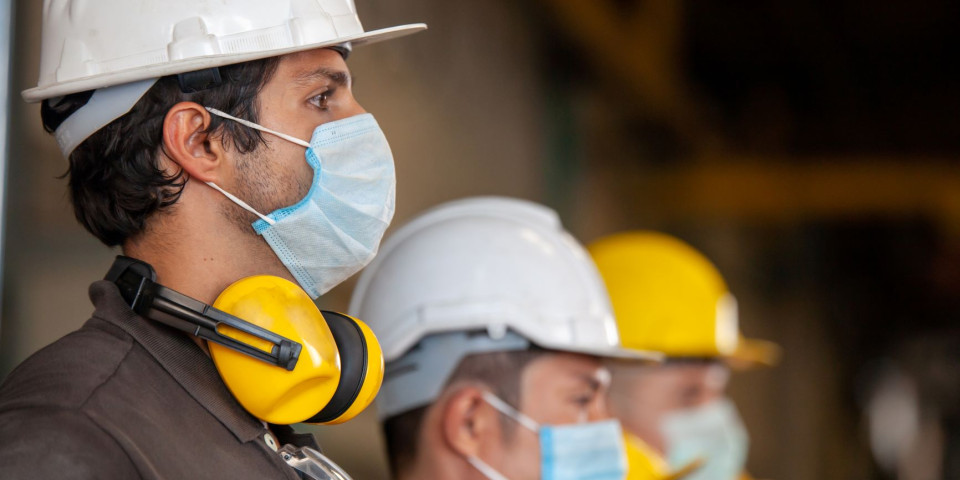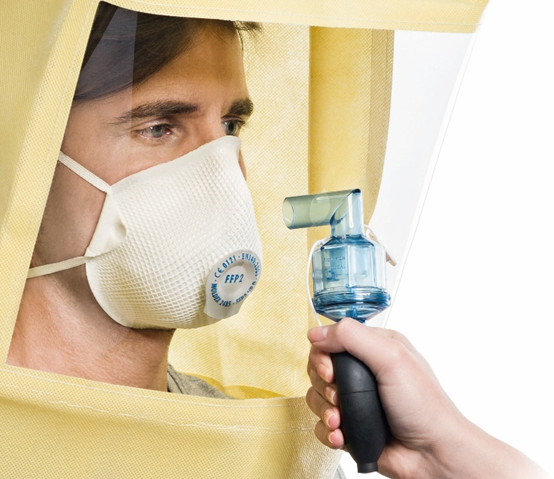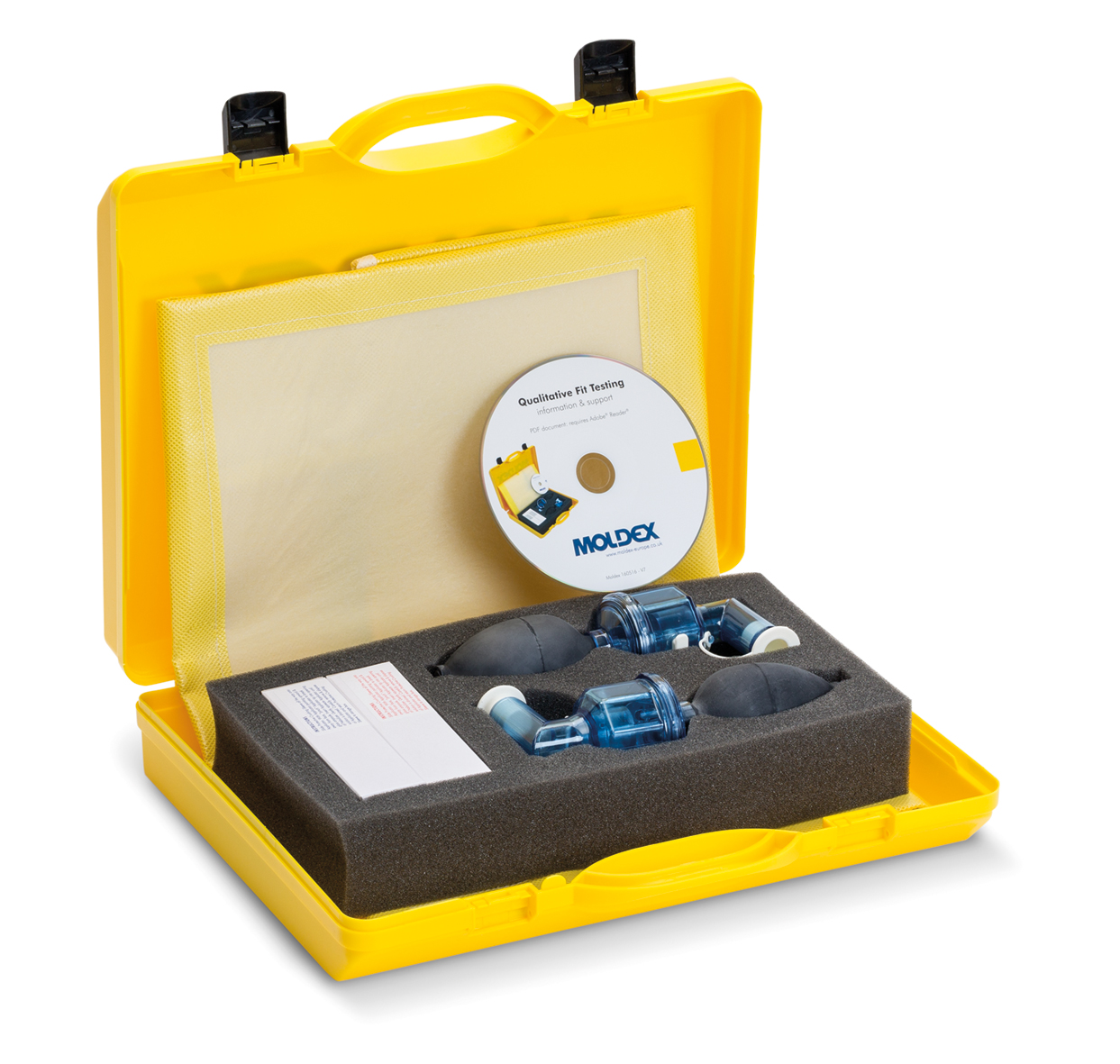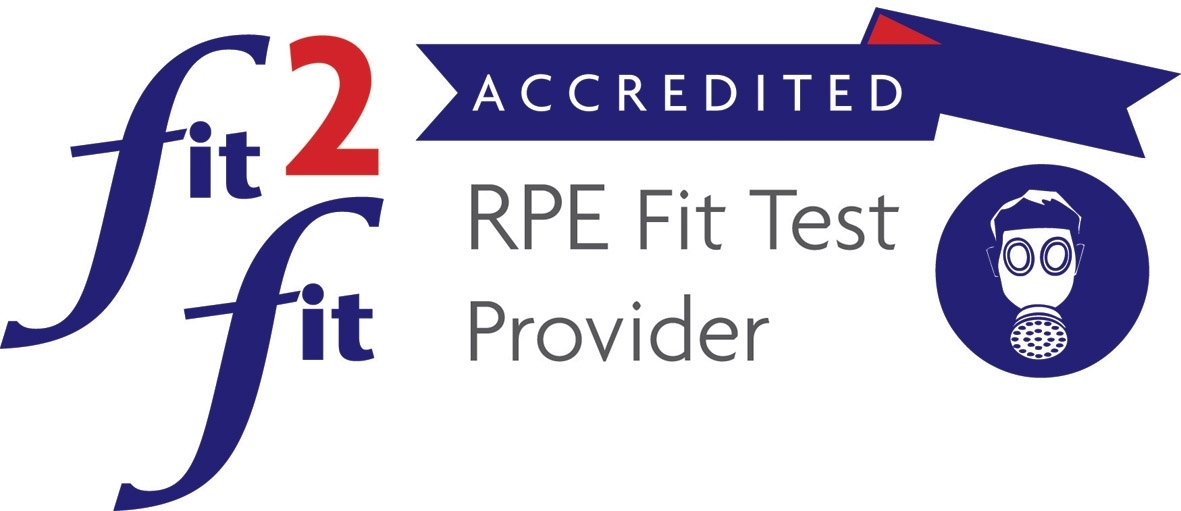Latest News
ESS Guide to Qualitative Face Fit Testing
Posted on Friday, 19th February 2021

Respiratory Protective Equipment (RPE) is key to reducing the risks of workers developing life-changing illnesses from exposure to airborne hazards. Where RPE is necessary, it’s a legal responsibility for employers to ensure that any masks being used have undergone some form of face fit testing to certify it's effectiveness for the wearer.
Following on from last week’s blog on quantitative face fit testing, today we take you through the specifics of qualitative face fit testing (QLFT), and how this method of testing works.
What is face fit testing?
Face fit testing is the only way of thoroughly checking that any RPE being used is functioning correctly, and offering the necessary level of protection the wearer needs.
The process of fit testing ensures the tight-fitting mask forms a secure seal around the wearer’s face. This seal is essential to protecting the health of workers who could potentially come into contact with airborne hazards in their line of work.
Failure to form a complete seal may allow harmful particles to bypass the mask and make their way into the wearer’s respiratory system. This can have life-changing, and potentially deadly, consequences for the worker.
What are the guidelines for face masks?
It is a legal requirement for employers to provide face fit testing to any worker who needs to wear a mask during work to protect them from harmful airborne hazards.
The HSE’s HSG53 guidance outlines how employers need to ensure that any RPE used is ‘adequate’ and ‘suitable’ for the tasks being undertaken. This means selecting masks which will protect workers from the specific dangers of their working environments, and ensuring that any masks being used are fully-functioning and fit the wearer correctly.
What is qualitative face fit testing?
Qualitative face fit testing (QLFT) is one of the main methods of completing a face fit test. This method of testing can be used for any type of tight-fitting half-face mask, including disposable masks.
During QLFT, wearers will have the mask seal tested through what is referred to as a ‘taste test’. This involves a sweet or bitter solution being applied to the air around the mask. If the individual can begin to taste the solution, then the equipment has failed to protect the wearer, as some particles have made it past the mask into their respiratory system.
What is the difference between qualitative and quantitative fit testing?
While qualitative and quantitative fit testing both check the seal of masks around the wearer's face, they do so in different ways. While qualitative uses the 'taste test' approach, quantitative testing establishes a numerical value for the mask's effectiveness. The best type of methodology to use will depend on the specific RPE being used.
Quantitative face fit testing (QNFT) utilises quantitative face fit testing machines to record a numerical measurement of the amount of particles that make it into the individuals' breathing area while they are wearing their mask. From this measurement, a ‘fit factor’ can be established. Fit factors are simple calculations that establish the effectiveness of the mask's fit and how much protection they provide the wearer.
QNFT can be used to test full-face masks, as well as half-face masks. For more information on QNFT, check out our “ESS Guide to Quantitative Face Fit Testing”.
What is the main advantage of a qualitative fit test?
Many people find that QLFT is the more straightforward method of fit testing. This is because they don’t need to use quantitative face fit testing machines. All the necessary equipment needed for qualitative testing can be found in a qualitative face fit testing kit.
At ESS, we sell the BITREX® Qualitative Fit Test Kit from our online shop. This top of the range testing kit from Moldex provides all the equipment needed for QLFT, including:
- 2 x nebulisers

- 1 x test hood
- 6 x 2.5ml Bitrex Sensitivity solution
- 6 x 2.5ml Bitrex Test solution
- 2 x spare parts for nebulisers
- 2 x crushing sleeves
- 1 x Fit Test instruction CD
Please note that this equipment should only be used by someone who has received the necessary training to complete qualitative face fit testing.
What is the best mask to wear for Covid?
The ongoing coronavirus pandemic has brought the importance of RPE into sharp focus. More workplaces are being forced to re-assess their approach to RPE, with the general population being asked to wear masks in shops and other indoor spaces.
For frontline workers, it’s essential that any masks being worn are at the correct ‘P’ level. All tight-fit face masks come with filters of either P1, P2 or P3, with the higher numbers being more effective at filtering out potential harmful particles.
Frontline workers need to be wearing masks with at least P2 level protection, although P3 filters are preferred. P1 filters do not offer the necessary level of protection for frontline workers, but may be appropriate for general use in lower risk environments.
For more information on how masks and face fit testing can help reduce the spread of the coronavirus, check out our blog ‘The ESS Guide to Face Fit Testing for Covid-19’.
Face Fit Testing near me
Our expert trainers at ESS provide face fit testing options through both qualitative and quantitative methods.
We deliver our testing nationwide. Simply visit the relevant page on our website and make an enquiry to get your testing booked. Alternatively, you can also book by contacting our team directly, call us on 0115 8970 529, or email info@essentialsiteskills.com.
All of our trainers are accredited by Fit2Fit, the leading body for RPE fit testing standards in the UK.
Face Fit Train the Tester
At ESS, we don’t just provide our own face fit testing services, but also a variety of Face Fit Train the Tester courses. These courses provide learners with the practical skills and knowledge to perform face fit tests on their own employees to ensure the effectiveness of their equipment.
Many workplaces may prefer to send staff on a train the tester course as it will be more convenient and efficient to have a designated person on-site who can check equipment, rather than having to get external testers to perform all tests.
We provide various train the tester courses to suit the preferences of the employer:
- Face Fit Train the Tester
- Qualitative Face Fit Train the Tester - Fit2Fit Approved Course
- Quantitative Face Fit Train the Tester - Fit2Fit Approved Course
Further training
ESS do far more than just face fit testing. Our expert trainers deliver courses, NVQs, and apprenticeships across a wide range of disciplines and sectors. If you want to see the full range of the courses we have available, visit our online course index.


